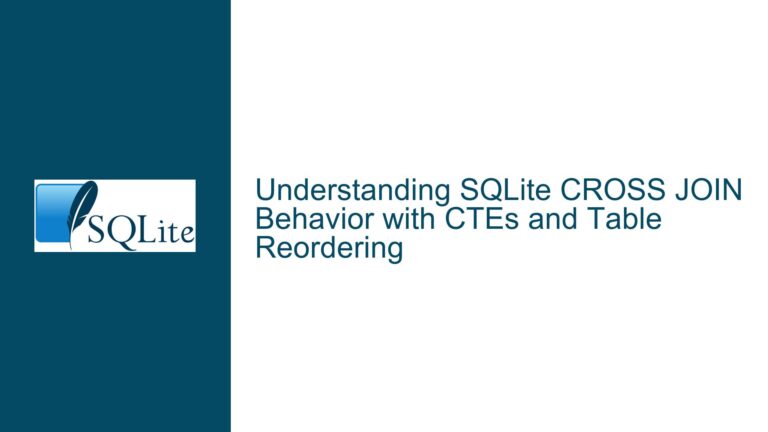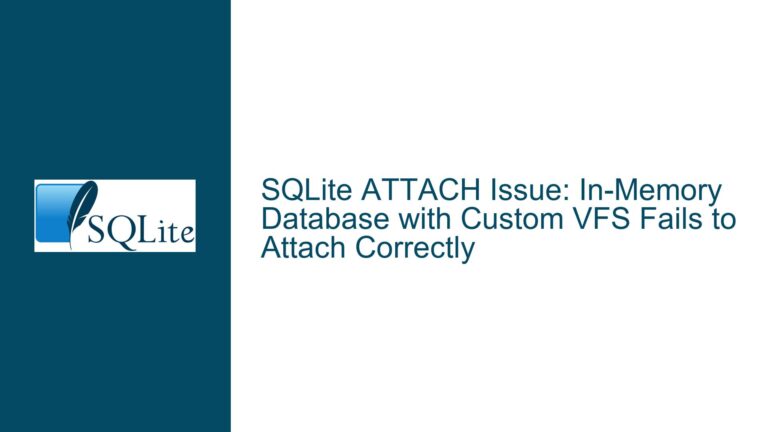SQLite CROSS JOIN Behavior with CTEs and Table Reordering
Issue Overview: CROSS JOIN and CTE Table Reordering in SQLite In SQLite, the CROSS JOIN operation is often used to enforce a specific order in which tables are joined, preventing the query optimizer from reordering the tables. However, when a Common Table Expression (CTE) is involved as the left-hand side (LHS) of a CROSS JOIN,…









